Our Verdict
A sturdy, stylish, middling model, but with some price-driven drawbacks.
For
- Robust milled chassis
- Gorgeous finish
- Price/performance on point
- Nice screen refresh
Against
- HOT AF temp-wise
- Not a lot of storage space
- No Camera
- Typically poor gaming battery life
PC Gamer's got your back
Coming in at the middle of the Zephyrus gaming laptop line-up, the Asus ROG Zephyrus M15 GU502 packs an Intel Core i7 10750H and an Nvidia GTX 1660 Ti into its svelte form. This nifty combo affords some steady gaming performance, especially when you consider the relatively reasonable price point of $1,299 (£1,000). But for this price, I'd still expect a little more from its other features than what I actually got.
I will admit I genuinely gasped when taking the M15 from its packaging. As the box opens, the laptop pushes out to meet you like some fancy, overpriced pop-up book. It doesn't have any bearing on performance, but it's a nice bit of flair on Asus' part.
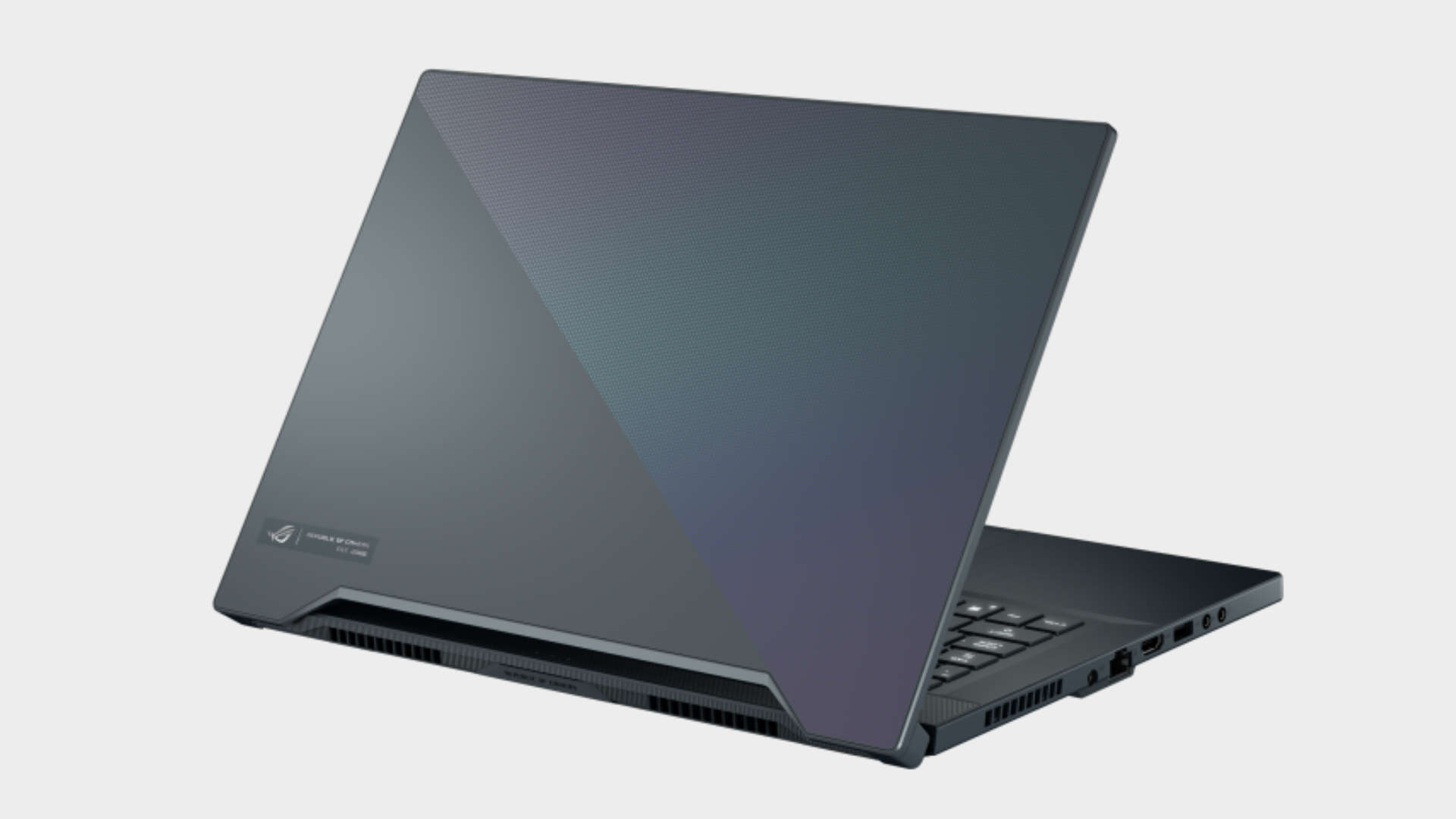

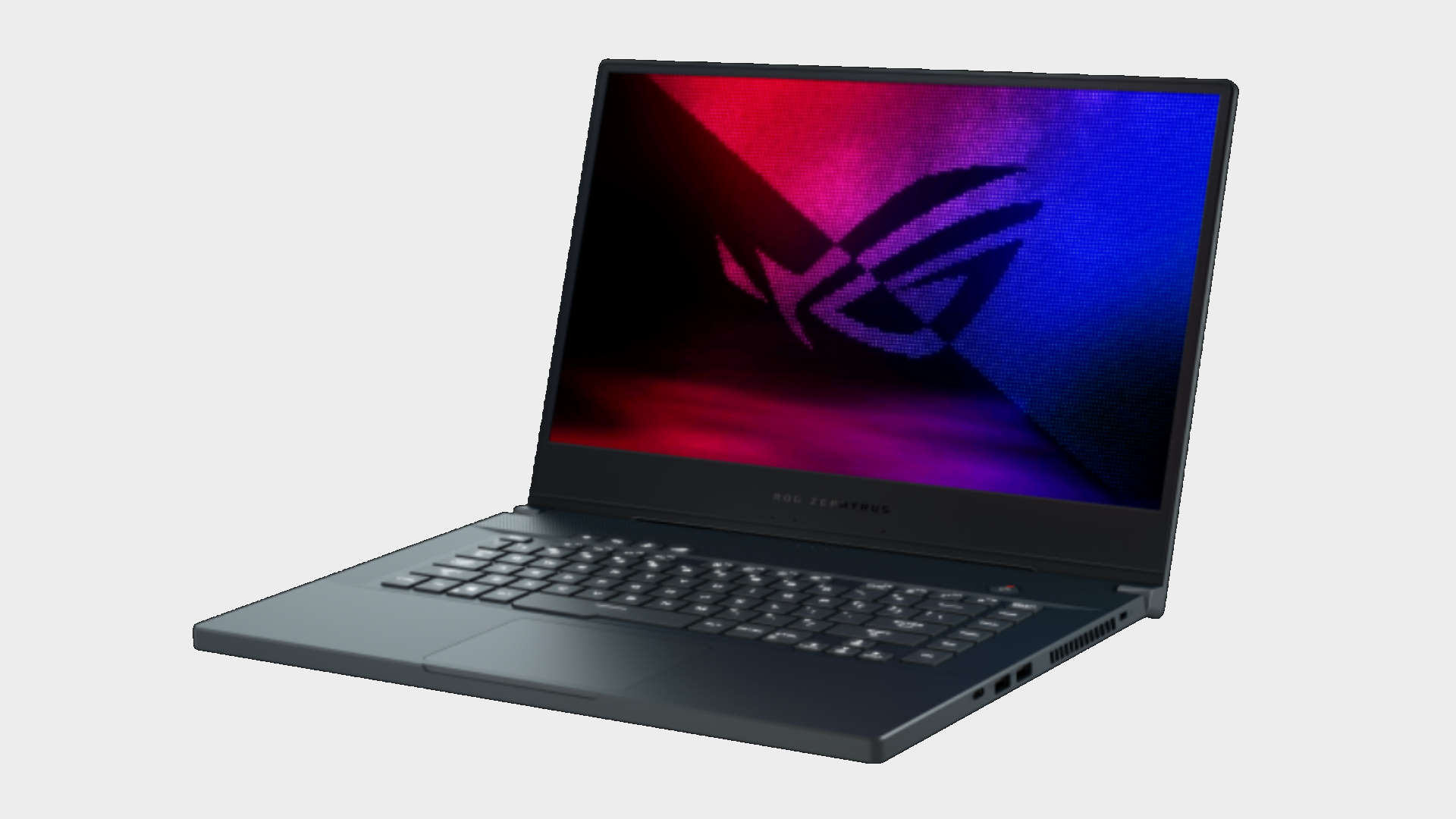
The chassis itself is gorgeously understated. It's slimmer and lighter than a lot of gaming laptops around. The half brushed aluminium, half 'prismatic dot design' finish even gives the M15 a classy look and feel, and means it's super grease-mark resistant. Being milled from solid aluminium makes for a super robust laptop—though the screen does still feel a tiny bit wobbly.
The major drawback to a metal chassis is that, while it may be sturdy, it sure does conduct heat. So, when you accidentally cover the exhausts for more than a minute, it's very difficult to get it back down to an acceptable temperature, until you exit the game and leave it to rest for a bit. Considering the CPU temps tend to reach an elevated 96-100°C (~205°F), with the GPU not far behind at 83°C (181°F), that translates to some pretty unwieldy external temps when the whole thing's encased in metal.
CPU: 2.6GHz Intel Core i7 10750H
GPU: Nvidia GeForce GTX 1660 Ti
RAM: 16GB DDR4
Screen: 15.6-inch 1080p IPS, 144Hz
Storage: 512GB SSD
Ports: 1x Thunderbolt 3/USB 3.2 Gen 2 Type-C, 1x USB 3.2 Gen 2 Type-A, 2x USB 3.2 Gen 1 Type-A, HDMI 2.0b, Gigabit Ethernet, headphone, mic
Weight: 4.2 pounds (1.9kg)
Size: 14.2 x 9.9 x 0.7 inches (360 x 252 x 19 mm)
In the machine's vain attempts to cool down, it does get a little screechy as well. At a maximum of around 37 decibels, it probably doesn't pass our Jacob's 'train carriage test,' i.e. you might feel embarrassed to use it on a train's quiet coach. However, if you just want to drown out the noise of the cooling system, the downward facing speakers are pretty decent. Though I've heard louder, there's no real issues with sound distortion at high volume, and as long as you have the machine on a hard surface, the resonation of sound through your table does help to enrich the experience.
There are also settings to nullify the noise of the rather expressive cooling system within Asus' included 'Armory Crate' software, as well as settings for tweaking performance. The software includes an array of pre-set visual profiles, including an 'eyecare' setting that limits the blue-light beaming into your eyeholes, as well as configurable profiles that allow you to save personal system and app settings for different situations.
There's some nice customisation here, and connectivity isn't bad at all. All the ports and connections are placed on the side for easy access, and to avoid blocking the screen as it opens. That satisfies my preference, though I'm aware it's subjective—it might get in the way for some users. N.B. Although you can easily remove the power cable, I suggest you don't take it out during gameplay. Not only are there some serious performance throttling issues when it runs off the battery, it'll also only last about an hour and ten minutes without a power lead. Not ideal.
System performance
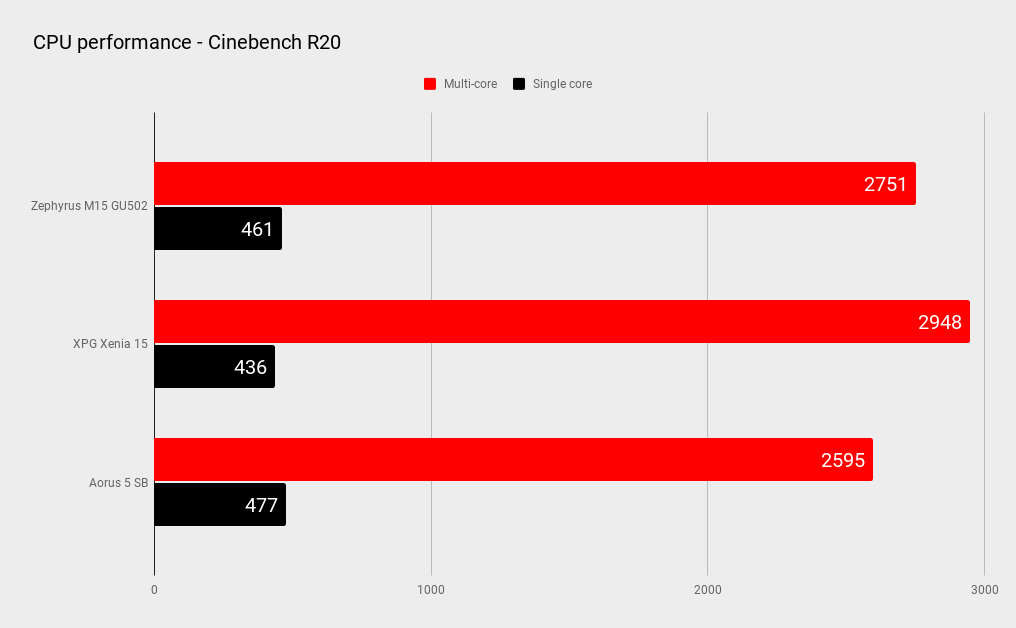
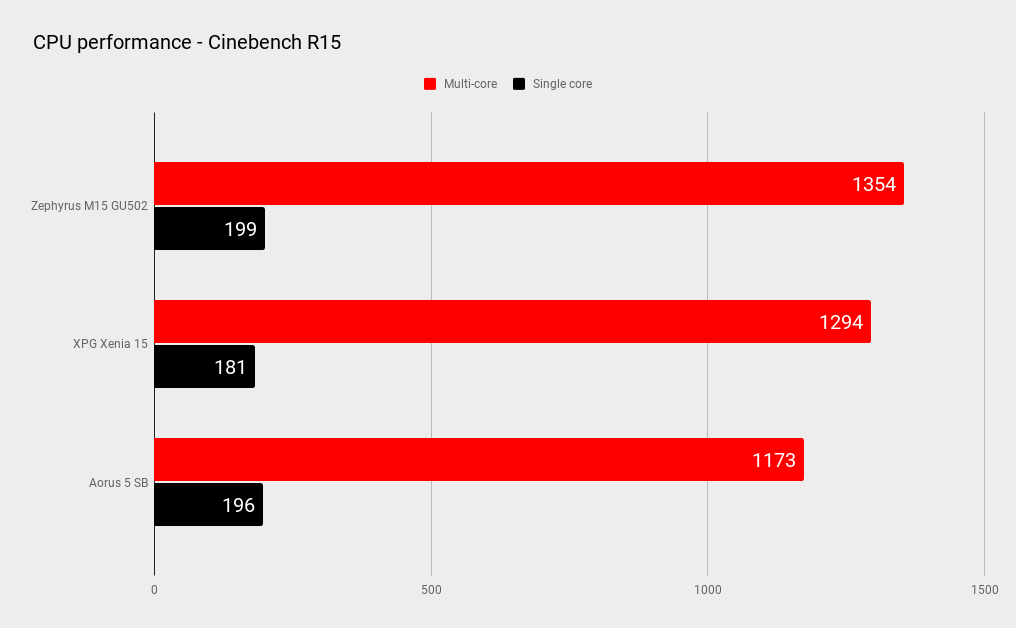
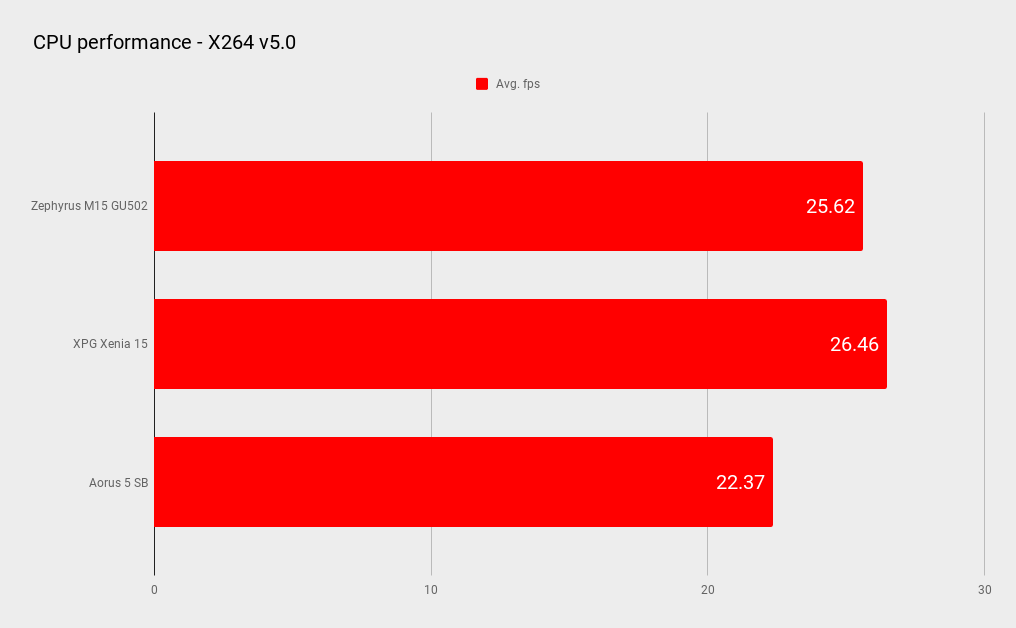
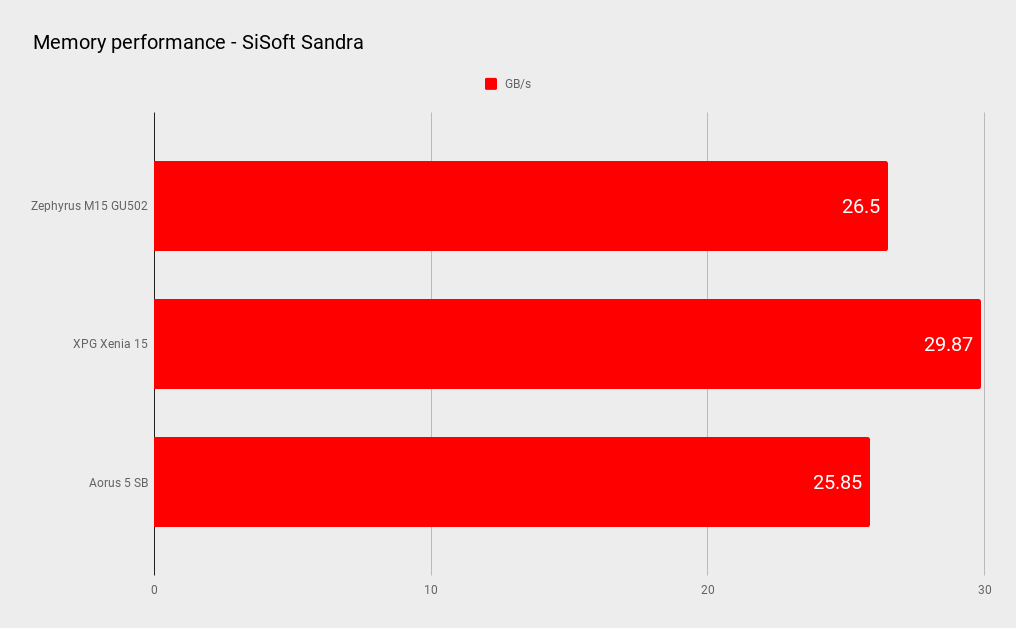
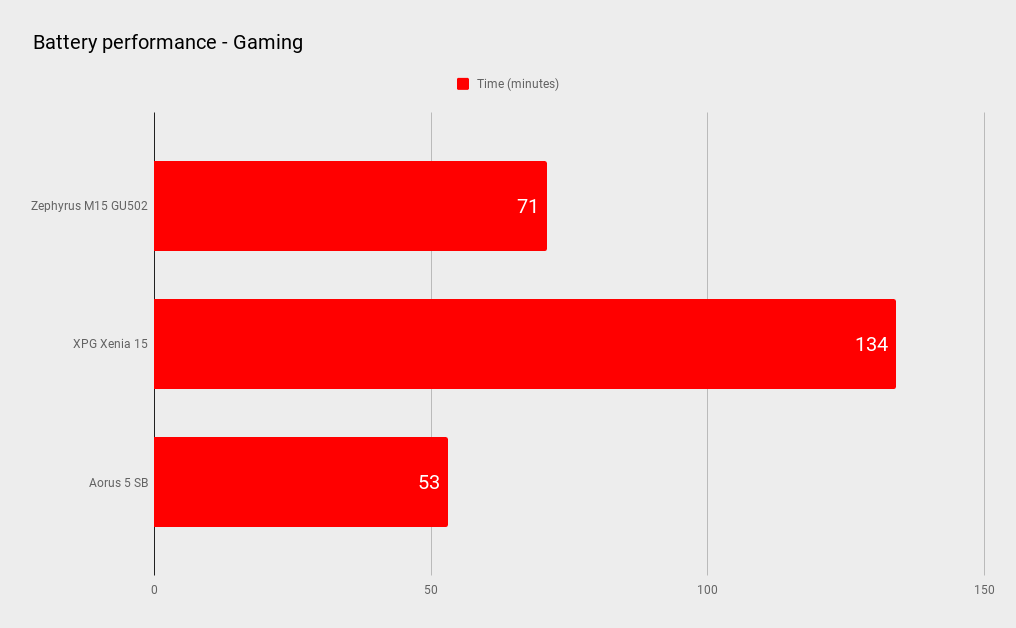
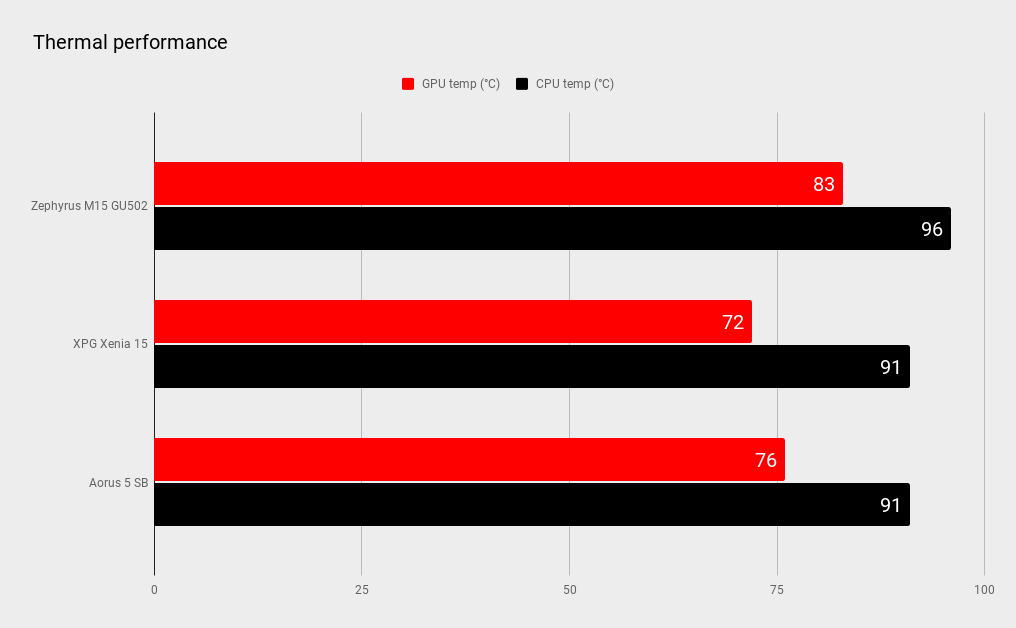
The lack of a webcam is sure to be a downside for some, but at least it helps keep the price down. Also contributing to the affordability factor is the mediocre keyboard. It's a little stiff on the keypress, and the backlights are not per-key programmable, so the single-zone lighting effects are very limited. Same goes for other models with the 'prism' design—perhaps another attempt to shy away from the edgy gamer aesthetic and add more corporate uniformity to the design.
Considering it is still a gaming laptop, one of my biggest issues with this machine is the paucity of storage capacity. With only a single 512GB SSD at my disposal I had to install then uninstall each individual game for benchmarking, which was rather tedious. So don't expect to have your whole gaming library at the ready.
Drawbacks considered, what matters most is that the M15 can bash out some solid gaming performance for the price, but don't expect to be turning all the settings up to full whack.
That said, the GU502L manages to tie with, and in some cases supersede, the similarly specced (yet more expensive) XPG Xenia 15. It charts a smooth 78 FPS average on Far Cry New Dawn at the screen's native 1080p on ultra settings, and runs Shadow of the Tomb Raider at a very consistent 70 FPS, with settings at highest, and shadows on ultra.
Gaming performance


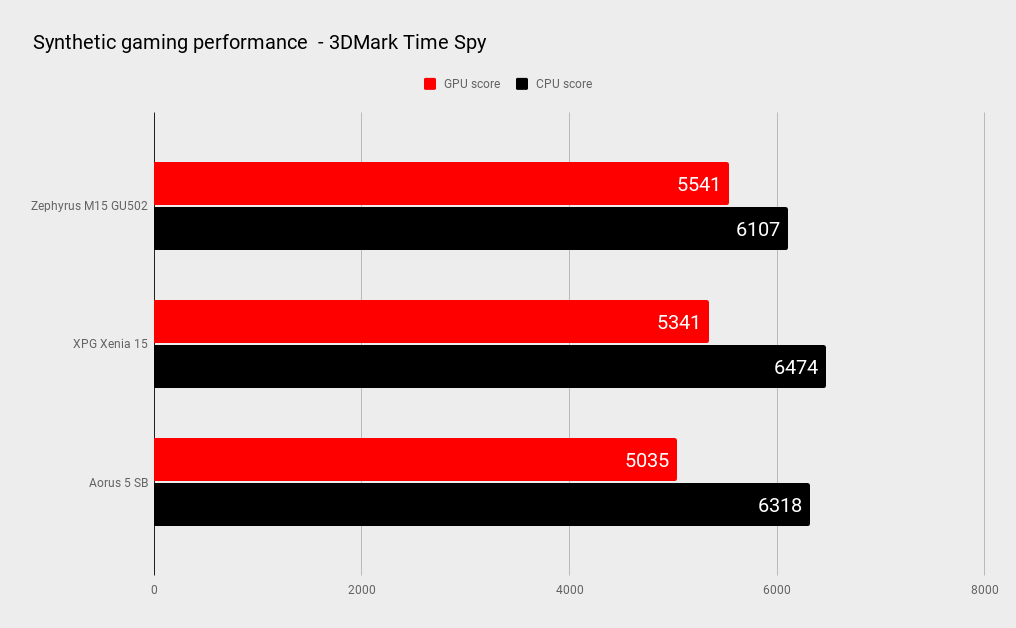
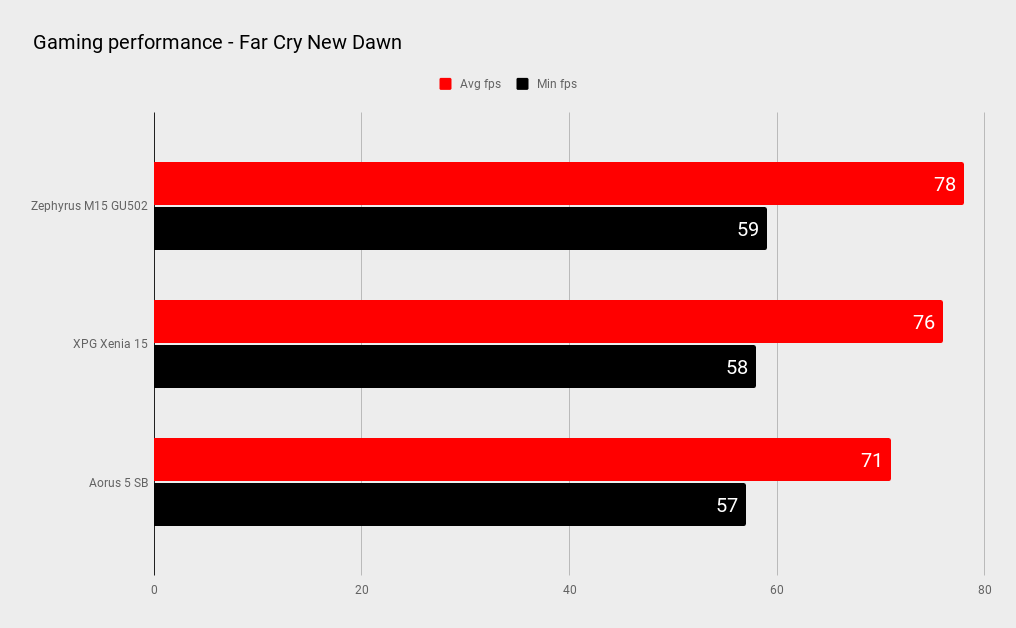
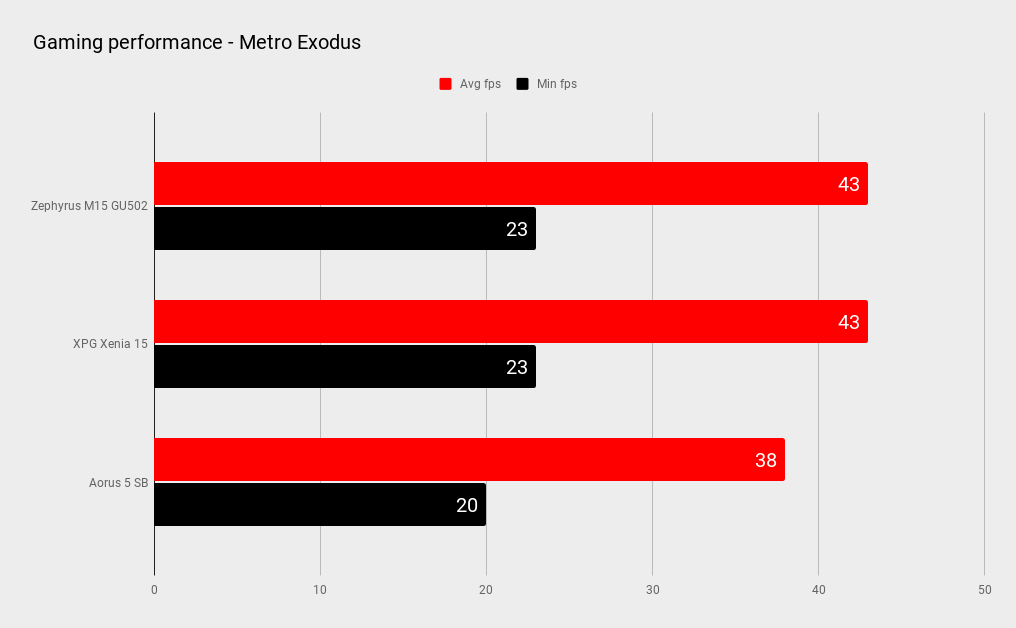
With the most graphically intensive games, such as Metro Exodus, the Asus M15 only managed to push 43 FPS average—that's with super special hair and PhysX switched off. And though that's not the worst score we've seen, it might need a tune down to get the most out of it.
When it comes to more CPU heavy games like Total War: Warhammer 2, it only manages to push a 50 FPS average, which isn't too impressive in the grand scheme of things. Still, it backs up those frames with an above average 144Hz refresh rate display, which gives you a better chance of your reflexes actually meaning something, as long as the frame rates actually allow it.
Sadly, it's easy to see where corners have been cut with this machine, meaning there are more than a few trade-offs if you want portability, steady FPS, and a speedy display for that price. Overall, the M15 seems best for those who only play a select few games at any one time, and are looking to ditch all the fancy greebles that some of the more expensive gaming laptops have to offer.
It's totally possible to get some good old fashioned 1080p gaming done at mid-high settings, and it'll even do so in impeccable, corporate style—so you can take it to work without looking too conspicuous. But don't expect much more from it performance wise, bar some nice productivity scores.
Still, it is a sturdy, slim, stylish machine, with punchy speakers enough horsepower to get the more speed-oriented gamers off the ground. And it proves that it's possible to design a well performing gaming laptop, without it looking like it was birthed by a transformer. Though, some more exhaust ports wouldn't go amiss.
A sturdy, stylish, middling model, but with some price-driven drawbacks.

Screw sports, Katie would rather watch Intel, AMD and Nvidia go at it. Having been obsessed with computers and graphics for three long decades, she took Game Art and Design up to Masters level at uni, and has been rambling about games, tech and science—rather sarcastically—for four years since. She can be found admiring technological advancements, scrambling for scintillating Raspberry Pi projects, preaching cybersecurity awareness, sighing over semiconductors, and gawping at the latest GPU upgrades. Right now she's waiting patiently for her chance to upload her consciousness into the cloud.

